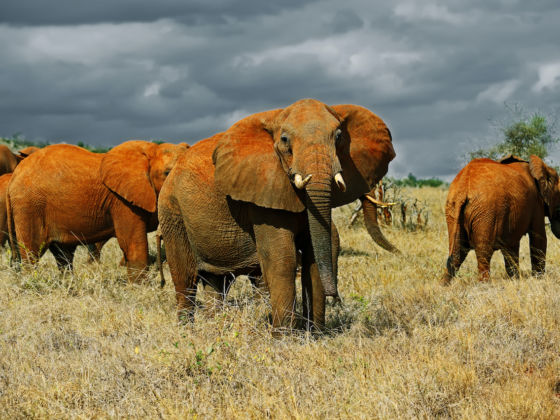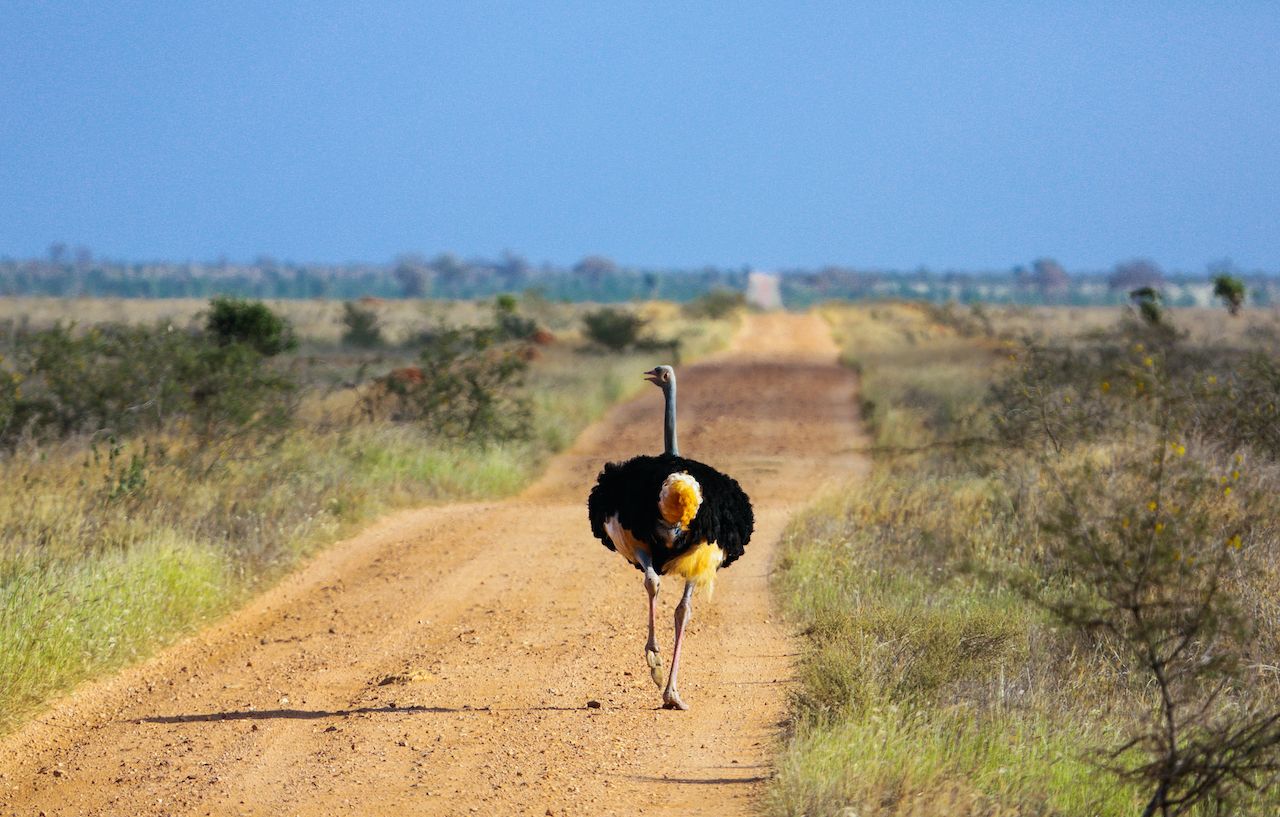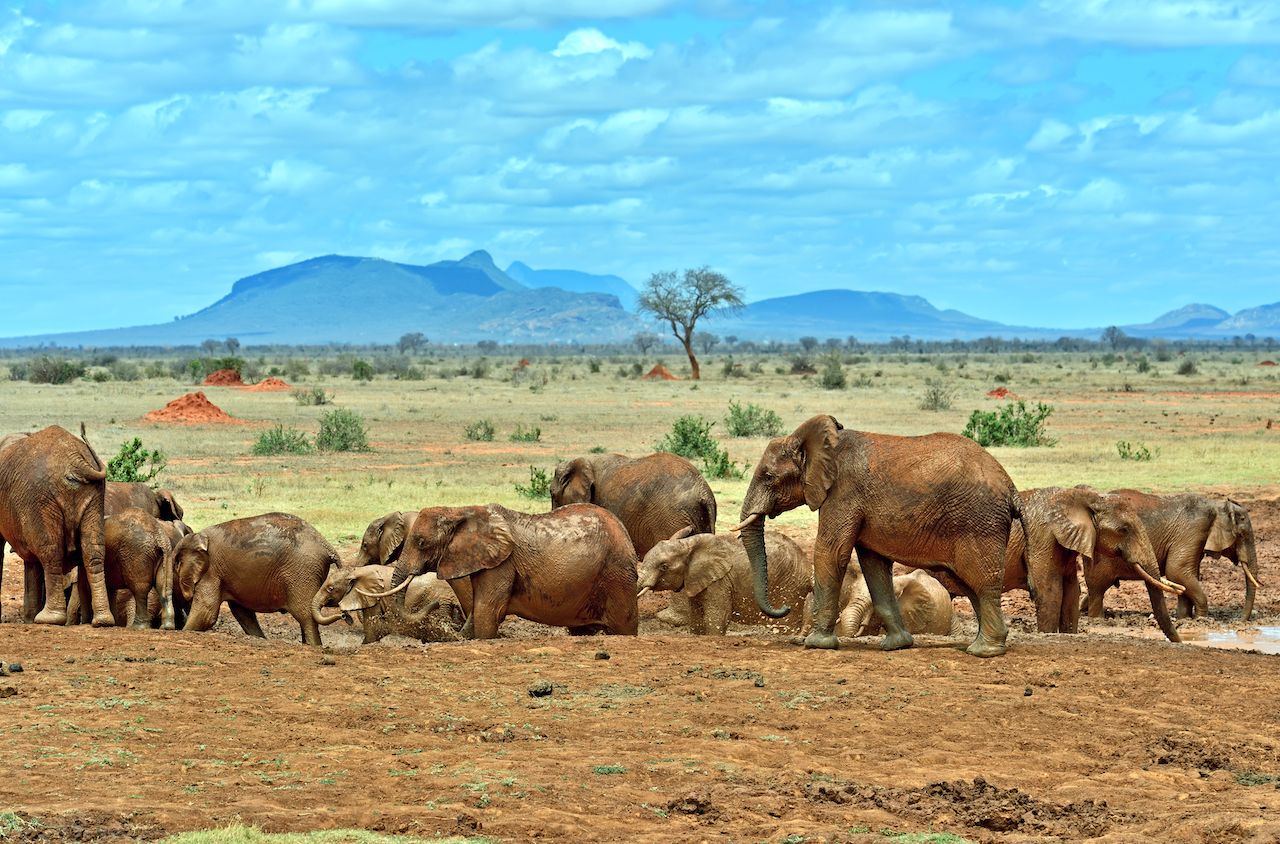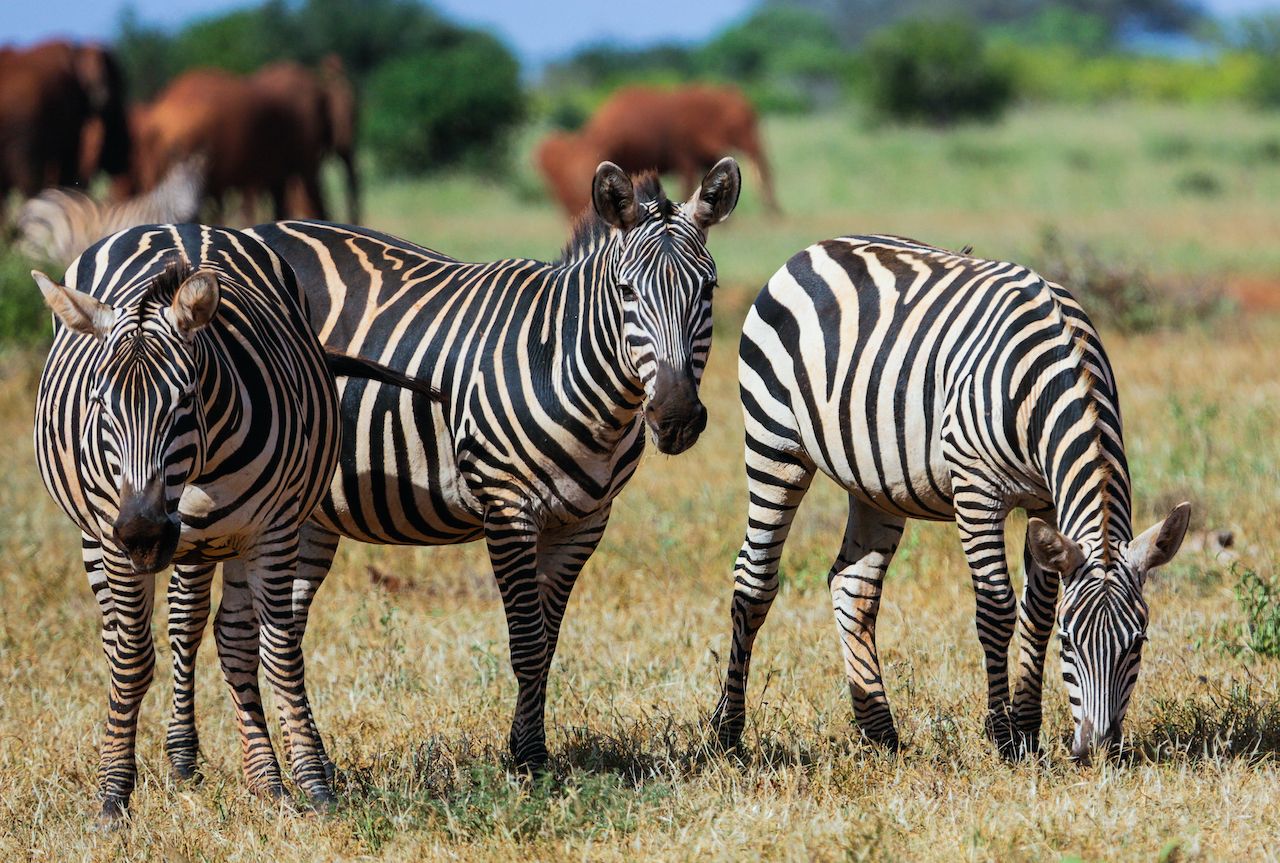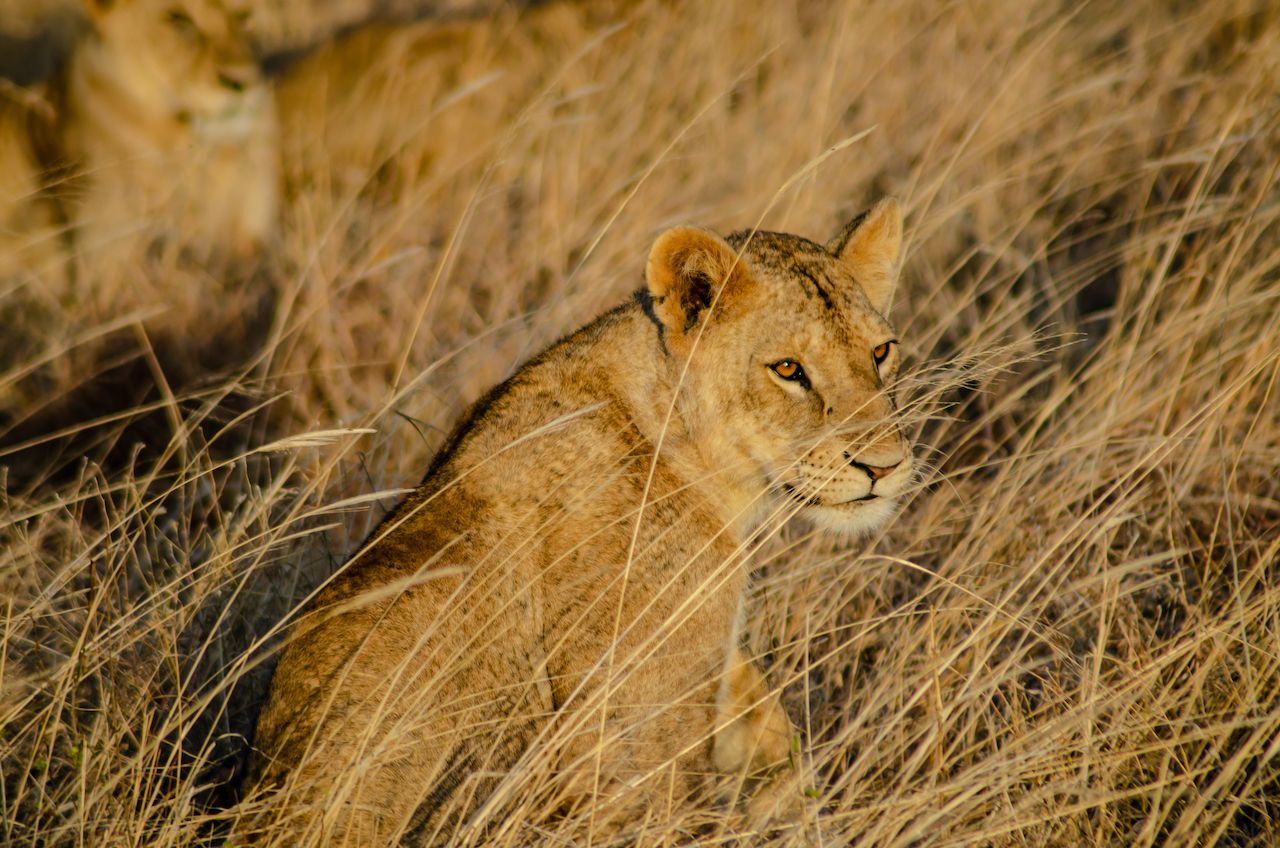If you do a search of where to travel in Kenya, Tsavo East National Park doesn’t appear at the top of the list. But a few months ago, my husband and I chose it over more famous Kenyan game parks, and it was worth the gamble. Tsavo East offers more affordable and intimate game drives, away from the most tourist-filled parks.
We currently live in Rwanda, but we move around a lot, so we want to make the most of the East African region while we can — which is made easier with RwandAir’s reach to 30 destinations. Last August, with plane tickets to Nairobi, Kenya, we had only two prerequisites for this trip: dip our toes in the ocean and see wild animals in their natural habitat. Deciding where specifically to go was a little more difficult since Kenya has more than 40 national parks and reserves, as well as a remarkable coastline that stretches over 800 miles along the Indian Ocean.
